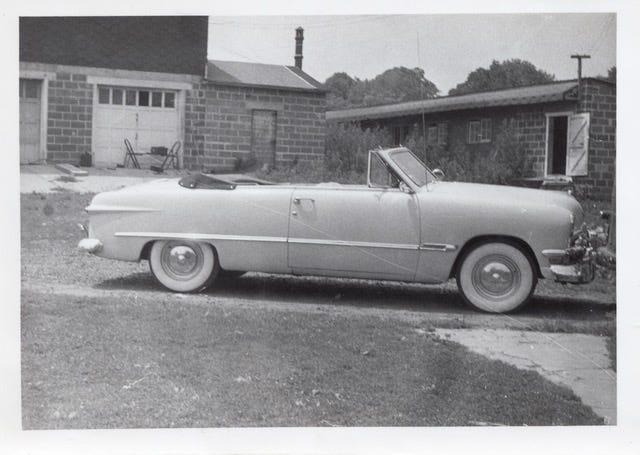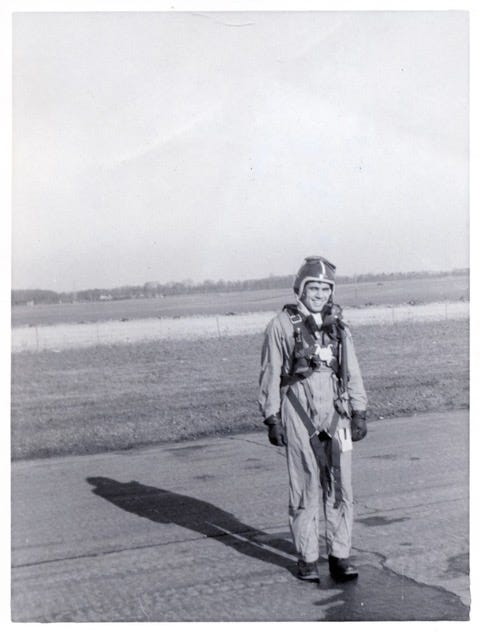Okay, we’re getting closer to “church,” but not quite there. Anyway, enjoy this part:
In addition to flying, jobs like squadron personnel officer, personal equipment officer, and fire marshal were routine. Whatever job needed managing; a pilot owned it. If anything went wrong, he answered the charges. Along with flying, it kept them occupied. Chico was the fire marshal. But he was “brash, thinking he was the greatest fighter pilot in the world,” per the squadron commander. So, he felt additional responsibility was required, saddling him with several jobs. Pilots also studied, had briefings about missions, practiced maneuvers, and performed other mundane things a pilot hated.
The squadron had the PIF (pilot information file). Every pilot knew where it was. When something new was presented, into the PIF it went, forcing them to read and maintain currency. There came the time when pilots had to sign before they could fly. The PIF was thick. Very seldom was anything retracted. A pilot was in charge, even though an enlisted ran the Form 5 section (flight hours), keeping the PIF current.
Married couples lived off base in a duplex housing complex. Couples gathered for dinner, parties, or going to town, but there wasn’t much to do in Albany. And with the war in Korea, the potential for orders was probable. To help prepare for combat, flights were sent to Camp Carson in Colorado for survival school. The intent was learning to survive with minimal gear and sustenance if they were shot down. Chico, not enjoying the wild country of snow deep Colorado, was happy when the class was terminated mid-course. The squadron went TDY (temporary duty) December 29, 1950, to train with the Brits.
Being the new guy, Chico packed and loaded the squadron equipment, then departed for Manston, England. Most flew their F-84s overseas. Not Chico. He strapped in as a crew member on a C-54, riding over. And even though the Air Force had broken the sound barrier, stepping into the “Jetsons,” the 1950s air-arm wasn’t much more advanced than the 1940s Army Air Corps. They’d switched to jet engines from internal combustion in front-line fighters, but they still hopped from location to location.
_____________________________
By design, the F-84 was engineered to fly more than a thousand miles before refueling. Although, at the time, the Air Force struggled with mainstay tactics: heavy bombers versus the newer, up and coming jet fighters. A, whoever ran the show controlled the tarmac proposition. Plus, what one flew during World War II dictated future Air Force direction. Think LeMay. Three branches in one: TAC (tactical air command), SAC (strategic air command), and MAC (military airlift command). Now, enter fastest, highest … FARTHEST!
Plus, during WW II, due to fuel range limitations, fighters were transported overseas. As cargo, planes were disassembled, crated, and loaded onto ships. Arriving at port, the opposite ensued, except the additional step of being resorted to airworthiness. Issues with electrical and hydraulic system contamination from moisture were common, requiring a month or longer to get planes airborne. War needed mobilization!
So, a ferry-route to Europe manifested. Using a system of hopping, the Air Force reduced transport times to days, or weeks, depending on weather conditions or mechanical breakdowns. Compared to shipping, it was faster, just not fast enough. Two routes were established, one northern, one southern. And to lengthen flying time, fighters carried external tanks.
With the introduction of the jet age, the first trans-Atlantic crossing utilized the northern ferry route. Under the leadership of Col. David Schilling, Fox Able One departed Selfridge AFB in Michigan on July 12, 1948. Sixteen P-80s successfully hopped their way to England, culminating in Germany. Fox Able Two then departed on May 25, 1949, to prepare for the next phase: Fox Able Four. Two F-84s and a modified B-29 were ferried to England and retrofitted, bringing the Air Force into the future.
On September 22, 1950, the trio of planes took off from Manston, England. Ten hours later, Col. Schilling completed the trip, cutting the time from days to just hours. His counterpart, Lt. Col. Ritchie, had to bail over Newfoundland due to fueling issues. And even though one did not complete the route, the flight proved the concept.
_____________________________
During the Battle of Britain, Germany launched air attacks against England. Having radar, thus the surprise element, the RAF repulsed the Luftwaffe over open water. Except, during the air-battles, the Luftwaffe unknowingly destroyed part of Britain’s radar defense capabilities. So, losing the repulse surprise element from limited radar abilities, Britain struggled to hold Germany at bay, allowing a greater number of fighters and bombers in without being intercepted.
Plus, Germany’s initial assault was against the RAF bases. And if they’d maintained that pressure, Britain would have capitulated. But, in an inexplicable move, Air Marshal Goering changed tactics, deciding to attack cities. The move allowed the RAF an opportunity to breathe, regroup, and then repulse, making Britain, Germanys first loss. But even though WW II had ended six years prior to the squadron arriving, old fighting tactics died hard. Now, Manston, the city, was on the coast and supported an RAF fighter base. And our government, maintaining the lend-lease program, kept a presence in Europe after the war. As such, the money injected into the economies averted countries from switching to communist control and rebuilt the continent.
By January 10, Chico was back in the cockpit. His time spent flying was practice attacking. Flights would go out over the English Channel or North Sea, turn back and like the old enemy, try to beat the Brits at their game honed during the war: “The missions we flew against the RAF were fun—legal buzzing. The idea was to get to an American base without being spotted. Then you’d get up over the base and make all kinds of attacks, buzzing and strafing and then leave. If the British showed up, you’d have to stay out of their way, and they’d try to get you. We’d fly low level over water and land (on the deck) under the radar and do air-to-air at higher altitudes. It was fun, some of the most fun I’ve had flying.” - Roland X. Solis
The squadron also flew fighter escort, covering bombers over the English Channel into Europe while they made simulated bomb runs. Providing air cover, “enemy” fighters would attack, having quasi-dogfights, simulating air-to-air. Chico was in his element, wishing for actual combat. But when not flying, they were busy learning about each other on personal levels: “One day Don was drunk, and we were all in the RAF club. Don was hunkered down on the floor. It was after a big party. He said, ‘Chico, you’ve got the smell of death.’ I said, ‘Oh, okay,’ and then I said, ‘I’ll send you a Christmas card every year I’m still alive.’ He’d laugh; he had a cackle when he laughed. He was good; I liked him. Young left shortly after that, and Booty became the squadron commander. It was a nice time; I enjoyed Manston. It was a good assignment. I’m glad it lasted so long—good flying and all kinds of weather and good missions.” – Roland X. Solis




